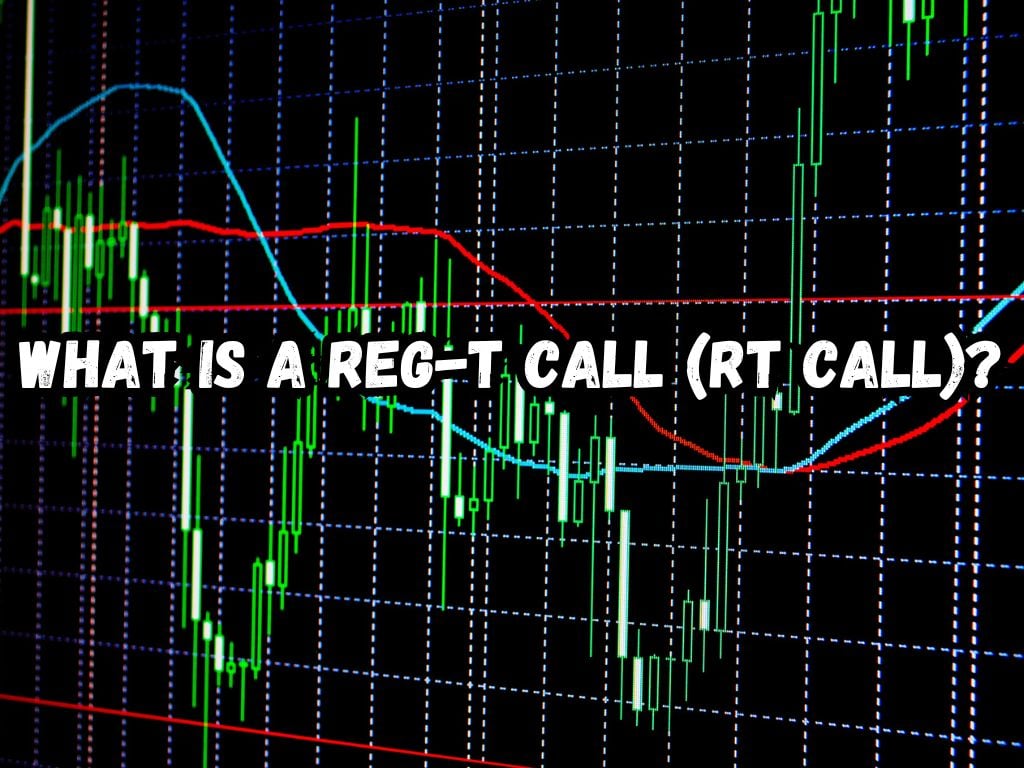In the world of trading, especially when engaging in margin accounts, understanding regulatory requirements is crucial.
One such requirement traders might encounter is the Regulation T Call, commonly known as a Reg-T Call. This guide aims at demystifying the Reg-T Call, outlining what it entails, its causes, and steps for resolution.
Whether you’re a seasoned trader or new to using leverage, understanding what is a Reg T call, is essential to managing your trading account effectively.
What is a Reg T Call?
A Reg-T Call arises in margin accounts when there are violations of the Federal Reserve Board’s Regulation T. This regulation governs the amount of credit brokers can provide to traders for purchasing securities.
A central aspect of Regulation T is the initial margin requirement, typically set at 50%. This means traders must furnish at least half of the purchase price of securities in their account.
When this requirement is not met, a Reg-T Call is issued to alert the trader to resolve the shortfall.

The Cause and Effect of a Reg-T Call
Reg-T Calls are triggered by various actions or market events. A significant drop in the value of held securities can reduce the equity below the 50% mark.
Alternatively, purchasing additional securities without depositing sufficient funds can also cause a shortfall. When a Reg-T Call occurs, traders are under pressure to act swiftly.
Failing to meet the call can lead to the brokerage selling off securities to cover the shortfall, potentially at a loss to the trader.
Regulatory Framework Around Reg-T Calls
The Federal Reserve’s Regulation T sets the initial margin requirement and the rules surrounding the issuance and resolution of Reg-T Calls.
Traders generally have a standard period, usually four business days, to meet the call. This tight timeframe emphasizes the importance of prompt action to prevent further complications.
Steps to Resolve a Reg-T Call
Addressing a Reg-T Call effectively requires understanding the options available. Deposit of cash or securities equivalent to the shortfall is a straightforward solution.
Selling part of the held securities to generate the necessary funds is another. Whichever path is chosen, the goal is to act promptly to restore the account to compliance with Regulation T.
Prevention and Best Practices
Preventing Reg-T Calls is preferable to resolving them. Awareness of account balances and maintaining a buffer above the minimum requirements can help avoid these calls.
Additionally, understanding how market volatility affects account equity and making informed trading decisions play a crucial role in prevention.
The Role of Brokerages in Managing Reg-T Calls
Brokerage’s Responsibilities
Brokerages act as gatekeepers for regulatory compliance, ensuring that their clients adhere to the rules set forth by the Federal Reserve’s Regulation T. When a Reg-T Call is on the horizon, it is the brokerage’s duty to notify the trader with clear communication.
They must provide precise details concerning the call, including the amount needed to meet the margin requirement and the deadline for doing so.
Additionally, brokerages monitor accounts continuously for potential margin deficiencies and provide tools and resources to help traders manage their investments.
Margin Agreement Policies
Before a trader can begin margin trading, they must sign a margin agreement with their brokerage. This document outlines the terms and conditions under which the brokerage extends credit to the trader, including how Reg-T Calls will be handled.
It is critical that traders understand these policies as they detail vital processes such as the method by which securities may be liquidated if a Reg-T Call is not met and any associated fees or penalties.
Traders should be fully aware of these policies to navigate the terrain of margin trading with full knowledge of their brokerage’s role in managing Reg-T Calls.

Frequently Asked Questions
What are the differences between a Reg-T Call and a Fed Call?
A Reg-T Call specifically addresses the initial margin requirement violations under Regulation T, while a Fed Call is a broader term that can refer to various regulatory margin calls.
Does a Reg-T Call apply to all types of securities?
Reg-T Calls apply to securities purchased on margin within an account governed by Regulation T. Different securities may have different requirements based on their volatility and risk.
What are some immediate actions I can take if I receive a Reg-T Call?
Immediate actions include reviewing your account to understand the shortfall, contacting your broker for advice, and either depositing funds or selling securities to meet the call.
How do I calculate the amount needed to cover a Reg-T Call?
Calculate the current margin percentage of your account and determine how much equity is needed to reach the 50% requirement. This gap represents the amount needed to cover the Reg-T Call.
Conclusion
Reg-T Calls impose certain constraints and demands on traders but understanding their mechanics demystifies their impact.
By staying informed about margin requirements and keeping a vigilant eye on account status, traders can navigate these regulatory waters with confidence.
Understanding and managing Reg-T Calls are part of the broader skillset required for successful margin trading.
With this guide, traders can approach these calls with the knowledge and confidence needed to resolve them efficiently, maintaining the health and stability of their trading accounts.


 Tags:
Tags:










